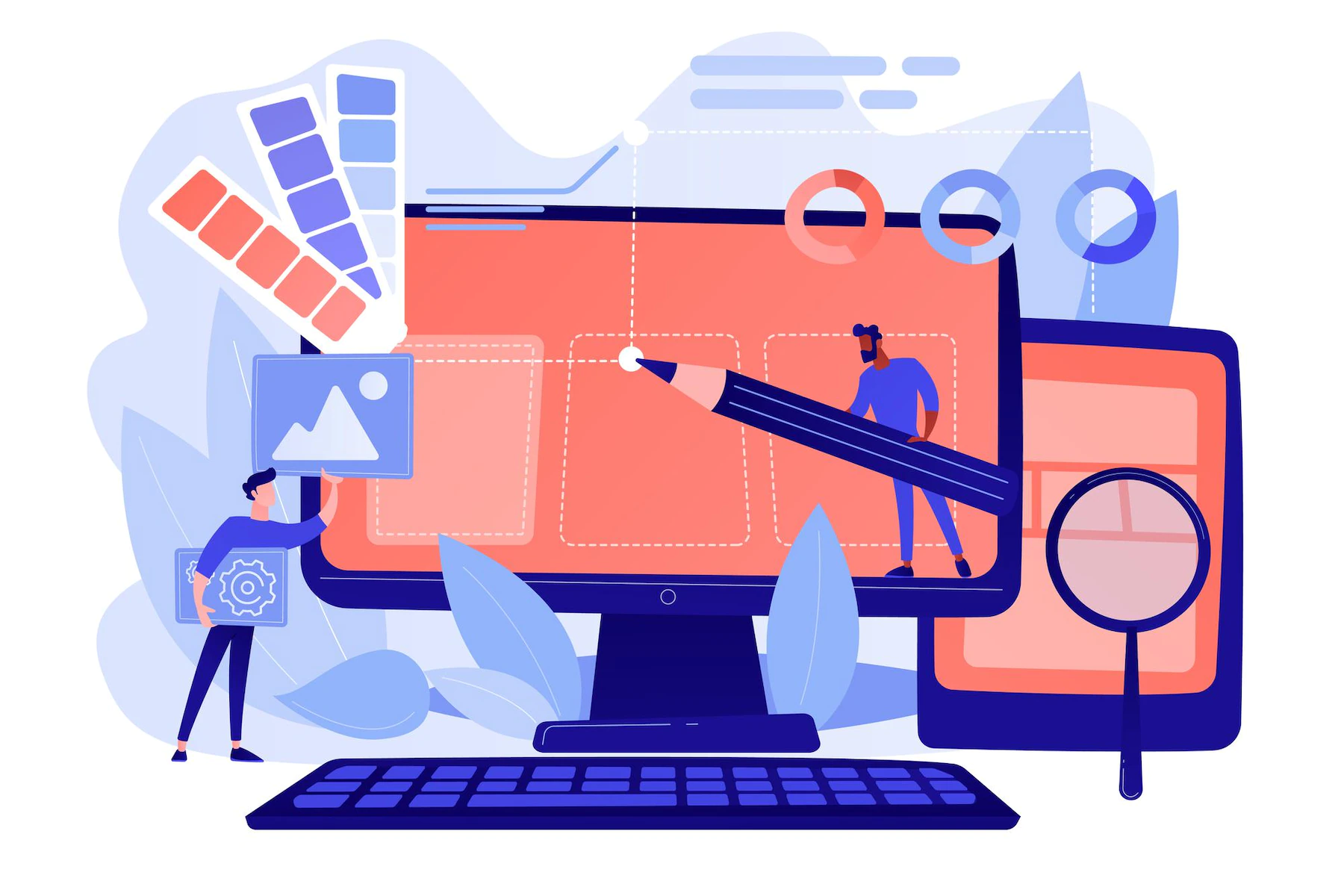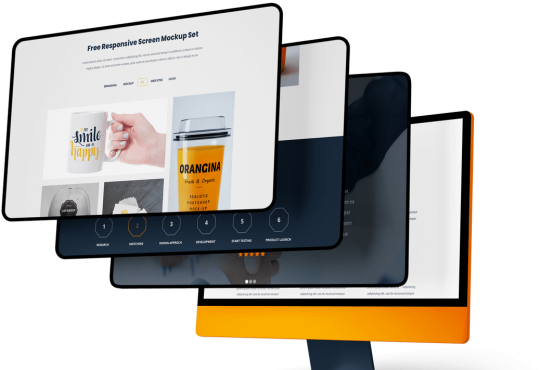
The future of web design isn’t so much about technology or trends as it is about social engagement, customer retention, and getting more out of your website.
It’s not enough to make your site look great; you have to ensure that the customer can easily find what they’re looking for and that they can complete the transaction they set out to do on your site.
This article will lay out ten of the biggest web design trends you need to know to keep your business up-to-date and successful in 2022.
1) The Rise of AI
Artificial intelligence (AI) is widely used today, and it’s only going to become more prevalent with time. AI essentially refers to computer systems that have been programmed with a learning capability.
An AI can learn, develop and re-program itself based on given parameters, and it can think independently. In other words, an AI isn’t limited by simple rules and procedures—it relies on its personal experience rather than being told what to do.
As you might imagine, there are some very real implications for web design here. Web designers will need to consider how AI could be incorporated into their workflows, and they may even need to learn new skills themselves.
There are many different types of artificial intelligence out there, but one thing is certain: The world of web design will never be quite the same again.
2) Why Responsive Doesn’t Mean Anything Anymore
The term responsive web design has lost most of its meaning. Most developers have adopted responsive practices long ago, and if they haven’t, you probably shouldn’t be working with them. But that doesn’t mean responsive web design is any less relevant.
In fact, it’s more important than ever before. It just needs a new name. And a new definition. Responsive web design is about designing your website to look good across all devices—from desktop computers down to smartphones—and ensuring those devices can access your content quickly and easily.
That means no matter what device someone uses to visit your site, it should look great and load fast, so visitors will want to return (and hopefully buy something from you).
3) The Emergence of Native Ads
Native ads are changing web design forever, but their greatest impact will be mobile. Readers prefer organic content over ads when surfing from a smartphone or tablet, and native ads can mimic organic content more closely than other forms of advertising.
Several big and small companies are already employing native ads for clients. In fact, estimates show that 80% of Facebook’s revenue currently comes from native ad sales, and many analysts believe that ratio will only rise as time goes on.
Companies providing Web designing services in India have also started using native ads to drive conversions and increase profits.
4) How Email Marketing Is Going to Change
Email marketing has undergone many changes since it first started getting popular. It was originally meant for direct communication between businesses and their customers.
Since then, it has gone through several iterations and updates. Web designers predict that many more changes will come down email’s pipeline, meaning businesses will have even more tools at their disposal for communicating with their customers.
The way email marketing works will change significantly due to these changes. Businesses need to prepare themselves for these changes to take advantage of them when they happen.
5) Looking for UI? Look no further
Every top website development company must keep a close eye on trends emerging on major eCommerce marketplaces.
As we continue to explore how consumers interact with websites in different parts of the world, we’ll continue to see new design patterns emerge.
Companies need to stay ahead of these developments to deliver top-notch experiences across devices and platforms.
6) GraphQL Will Rule the World Even if Nobody Cares About it Yet
GraphQL will eventually become a staple of web development and a must-have skill for developers, but it is still very much in its infancy. The technology was introduced by Facebook back in 2015, and other big companies such as Instagram, Twitter, and Shopify have followed suit by adopting GraphQL for their sites.
In time we will begin to see more implementations from major organizations – until then, you must start wrapping your head around what could be one of tomorrow’s most popular programming languages.
If you are looking to brush up on your knowledge before taking the plunge into GraphQL, here are some great resources that can help you Getting Started with GraphQL, Introduction to GraphQL: Queries and Mutations, A Primer on GraphQL Subscriptions.
7) Voice Assistants Are Gonna Eat Our Lunch (And Dinner and Breakfast)
It will be very difficult for brands and businesses to get online attention if voice assistants continue eating our lunch (and dinner and breakfast). Customers increasingly turn to voice search on Google, Apple, and Amazon devices when they want information or help with a task.
It only makes sense that they want their products purchased through those same channels. We’re already seeing some of these trends take hold now, so it should come as no surprise that voice-assisted shopping is predicted to be a $40 billion industry by 2020.
What does all of this mean? You might fall behind tomorrow if you aren’t taking steps today to make your business more accessible via voice search.
8) Digital Transformation Will be a Thing, But What Does That Mean Exactly?
One thing that should be fairly clear is that we’re moving toward a fully digital, web-based world. Ten years from now, almost everything we do—our jobs, entertainment, and even our social lives—will involve interaction with a computer.
It makes sense that companies will need to make sure their websites can adapt quickly and efficiently as needs change over time.
9) Content Is Still King, Just Not Quite How We Imagined It.
In spite of all the advances, what isn’t changing is that it’s still all about great content, says Murano. Now you’re just free to present that content however you want. But don’t get too crazy about it! There are still best practices.
I see many people jumping on trends, but I think we need to take a step back and look at what users want and need. We should be thinking about how we can improve their experience by designing for them first and foremost—and then using design to enhance or amplify their experience rather than as an end goal. It’s not always about making things pretty; it’s about working well.
10) IoT, VR, and AR are Coming at Us Fast and Hard
The Internet of Things (IoT) is already a big deal, and it’s only going to get bigger. IoT-related devices are likely to number more than 30 billion by 2022, and 5G mobile networks should accelerate that number. That will mean even faster adoption of virtual reality (VR) and augmented reality (AR) technologies.
As VR/AR becomes part of our daily lives, we can expect web designers to invest more time in creating new website experiences for these platforms. However, VR/AR won’t completely replace traditional websites; they won’t exist without them.
We can also expect websites to become increasingly mobile-friendly as AR takes off and users continue accessing content on their smartphones and tablets.
Read Also: Why is Web Design and Development Important for Business?
Conclusion
We’ve just shared a bunch of web design trends that you need to keep your eye on to stay ahead of competitors. In fact, these aren’t even all of them. But if you follow our advice, you’ll be doing your part to give customers a memorable experience and gain a competitive edge by providing something they don’t already have access to.
We hope you enjoyed reading through these trends as much as we did while putting together our top-ten list. Let us know what you think about it in the comments section below!



